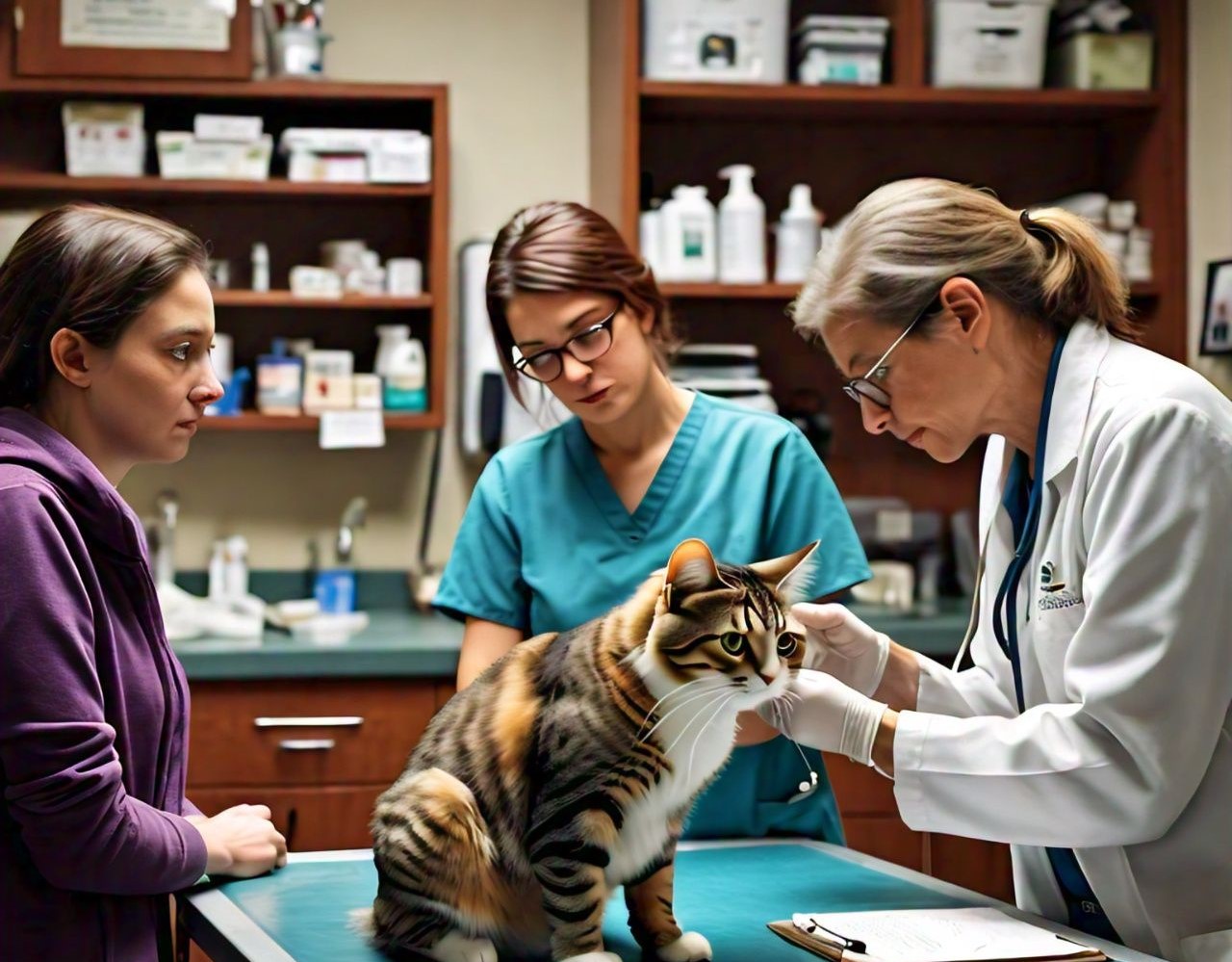Cats are known for their mysterious and independent nature, making it sometimes challenging for their human companions to understand them fully. However, by learning to decode feline body language, you can gain valuable insights into your cat‘s emotions, needs, and overall well-being. In this comprehensive guide on Understanding Cat’s Behavior: Decoding Feline Body Language, we will explore the various signals cats use to communicate and how you can interpret them to enhance your relationship with your feline friend.
The Importance of Understanding Feline Body Language
Understanding your cat’s body language is crucial for several reasons. It helps you:
- Respond Appropriately: By recognizing your cat‘s signals, you can respond to their needs more effectively, ensuring their comfort and happiness.
- Prevent Behavioral Issues: Early detection of stress or discomfort can prevent potential behavioral problems from developing.
- Strengthen Your Bond: Knowing how your cat feels fosters a deeper and more trusting relationship.
- Ensure Their Well-being: Understanding changes in body language can alert you to potential health issues that may require veterinary attention.
Key Components of Feline Body Language
To decode your cat’s behavior effectively, pay attention to several key components of their body language, including:
- Tail Position and Movement
- Ears
- Eyes
- Body Posture
- Vocalizations
- Grooming Habits
Tail Position and Movement
The tail is one of the most expressive parts of a cat’s body, and its position and movement can tell you a lot about your cat’s mood and intentions.
1. Tail Up
A tail held high generally signifies a happy and confident cat. If your cat approaches you with its tail up, it’s a sign of affection and trust. A slight curve at the tip of the tail indicates a friendly and relaxed attitude.
2. Tail Straight Down
A tail held straight down can indicate fear or aggression. This position is often seen when a cat feels threatened or is preparing to defend itself.
3. Puffed-Up Tail
A puffed-up tail is a clear sign that your cat is frightened or agitated. This reaction is usually accompanied by an arched back and is a defensive posture designed to make the cat appear larger to potential threats.
4. Twitching or Lashing Tail
Rapid tail movements, such as twitching or lashing, can indicate irritation or excitement. If your cat’s tail is moving quickly from side to side, it’s best to give them some space to avoid triggering aggressive behavior.
5. Tucked Tail
A tail tucked between the legs is a sign of fear, submission, or anxiety. Cats often exhibit this behavior when they are scared or feeling vulnerable.
Ears
A cat’s ears are highly expressive and can convey a range of emotions.
1. Ears Forward
When a cat’s ears are pointed forward, it usually means they are alert, curious, or interested in something. This is a sign that your cat is focused and ready to engage.
2. Ears Back or Flat
Ears flattened against the head indicate fear, aggression, or discomfort. This is often seen when a cat is preparing to defend itself or is feeling threatened.
3. Ears Swiveling
If your cat’s ears are swiveling or moving around, it means they are trying to locate the source of a sound. This behavior indicates alertness and curiosity.
Eyes
Your cat’s eyes can reveal a lot about their mood and intentions.
1. Slow Blinking
A slow blink is a sign of trust and affection. When your cat slowly blinks at you, it’s their way of showing that they feel safe and comfortable in your presence. You can reciprocate this gesture by slowly blinking back.
2. Dilated Pupils
Dilated pupils can indicate excitement, fear, or surprise. This response is often seen during playtime or when a cat is in a heightened state of alertness.
3. Narrowed Pupils
Narrowed pupils can signify aggression or displeasure. If your cat’s eyes become slits, it’s best to give them some space to avoid triggering aggressive behavior.
4. Direct Stare
A direct stare can be perceived as a challenge or threat in the feline world. If your cat is staring at you or another animal without blinking, it’s a sign of dominance or aggression.
Body Posture
A cat’s overall body posture can provide important clues about their emotional state.
1. Arched Back
An arched back is a defensive posture often accompanied by a puffed-up tail. This indicates that your cat is frightened and is trying to appear larger to ward off potential threats.
2. Crouching
Crouching is a sign that your cat is feeling threatened or is ready to pounce. This posture is often seen in hunting or play scenarios.
3. Relaxed Posture
A relaxed and stretched-out posture indicates that your cat is comfortable and content. This is a sign that your cat feels safe and secure in their environment.
4. Rolling Over
When a cat rolls over and exposes their belly, it’s a sign of trust and submission. However, this doesn’t necessarily mean they want a belly rub. Many cats dislike having their bellies touched, so proceed with caution.
Vocalizations
While not strictly body language, vocalizations are an important part of feline communication.
1. Purring
Purring is generally a sign of contentment and relaxation. However, cats also purr when they are in pain or distressed as a self-soothing mechanism.
2. Meowing
Cats meow to communicate with humans. The tone, pitch, and frequency of meows can convey different messages, such as hunger, attention-seeking, or discomfort.
3. Hissing and Growling
Hissing and growling are signs of fear, aggression, or annoyance. These vocalizations are warnings that your cat feels threatened and wants to be left alone.
4. Chirping and Trilling
Chirping and trilling are sounds that cats make when they are excited or trying to get your attention. These sounds are often used by mother cats to communicate with their kittens.
Grooming Habits
Grooming is a natural and important behavior for cats, but changes in grooming habits can indicate underlying issues.
1. Excessive Grooming
Excessive grooming can be a sign of stress, anxiety, or a medical condition such as allergies or skin infections. If your cat is grooming to the point of creating bald spots, it’s important to consult a veterinarian.
2. Lack of Grooming
A sudden decrease in grooming can indicate that your cat is feeling unwell or is experiencing pain. Cats are meticulous groomers, so a lack of grooming is a red flag that something may be wrong.
3. Mutual Grooming
Mutual grooming, or allogrooming, is a sign of social bonding and affection between cats. If your cat is grooming you or another cat, it’s a positive sign of trust and companionship.
How to Respond to Your Cat’s Body Language
Understanding your cat’s body language is only half the battle. Knowing how to respond appropriately is key to maintaining a positive and healthy relationship with your cat.
1. Respect Their Space
If your cat is showing signs of fear or aggression, it’s important to give them space and avoid forcing interactions. Allow your cat to approach you on their own terms.
2. Provide Comfort
If your cat is displaying signs of stress or anxiety, create a safe and comfortable environment for them. Provide hiding spots, cozy beds, and calming pheromone diffusers to help them feel secure.
3. Engage in Play
Playtime is essential for your cat’s mental and physical well-being. Engage in interactive play sessions to stimulate their hunting instincts and provide exercise.
4. Offer Positive Reinforcement
Use positive reinforcement techniques, such as treats and praise, to encourage desired behaviors. Avoid punishment, as it can damage your relationship and increase stress.
5. Monitor Health
Regularly monitor your cat’s health and behavior. Any sudden changes in behavior, grooming habits, or vocalizations should be addressed with a veterinarian to rule out underlying health issues.
Building a Strong Bond with Your Cat
Building a strong bond with your cat takes time, patience, and understanding. By learning to decode their body language and responding appropriately, you can create a trusting and loving relationship with your feline friend.
1. Spend Quality Time Together
Spend quality time with your cat, engaging in activities they enjoy. Whether it’s playing, grooming, or simply cuddling, these interactions strengthen your bond.
2. Respect Their Individuality
Every cat is unique, with their own personality and preferences. Respect your cat’s individuality and tailor your interactions to suit their needs and comfort level.
3. Provide Enrichment
Enrich your cat’s environment with toys, scratching posts, climbing structures, and interactive feeders. Enrichment helps prevent boredom and promotes mental and physical health.
4. Practice Patience
Building a strong bond takes time and patience. Be consistent in your interactions and allow your cat to build trust at their own pace.
Conclusion
Understanding your cat‘s behavior and decoding their body language is essential for fostering a healthy and happy relationship with your feline companion. By paying attention to their tail position, ears, eyes, body posture, vocalizations, and grooming habits, you can gain valuable insights into their emotions and needs. This comprehensive guide on **Understanding Cat’s Behavior: Decoding
Feline Body Language** provides the tools and knowledge you need to enhance your bond with your cat and create a harmonious living environment.
By focusing on the keyword “Understanding Cat’s Behavior: Decoding Feline Body Language,” this SEO-optimized article aims to provide valuable and informative content that helps cat owners better understand and connect with their pets. Whether you’re a new cat owner or a seasoned feline enthusiast, these insights into feline behavior will help you create a deeper and more meaningful relationship with your cat.



